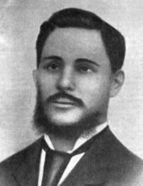

The distinction between the coastal region and the interior, the maritime regions and the hinterland, and the mills and cattle-breeding was a leit-motiv in Capistrano's interpretation. He believed that this difference reflected not only a geographical or economic, divide but also significant social disparities. In maritime colonisations, he noted, there was often a shortage of women, which created challenges for family creation and morality, leading to the segregation of women — a theme that Gilberto Freire would revisit — and a lack of love in marriages. Nevertheless, he observed a distinction between families from coastal regions, which he regarded as "freer and more harmonious", and those from the interior, which he viewed as more independent, similar to the farms they owned. In any case, he did not overlook miscegenation, concubinage, and the patriarchal reality of colonial family life, which he encapsulated in a well-known formula in Brazilian historical and sociological literature: "grim father, submissive wife, oppressed children."
In contrast to other liberals like Rui Barbosa and Silvio Romero, who supported Pombal's modernisation efforts and held a distinct antipathy toward the Jesuits, the sceptical and agnostic Capistrano de Abreu had a positive view of their role in colonial history. Agreeing with the analogy that Schäffer had drawn between Calvinism and Jesuitism, he highlighted the order's economic, social, and educational contributions in Brazil, even asserting that he favoured Jesuits rather than the settlers. He consistently emphasised their role as "educators of youth" and "founders of American linguistics." In his correspondence with João Lucio de Azevedo, he emphasised the Ignatians' love for the land, stating that "the Jesuit is a patriot of the land where he works", and he did not view them as cosmopolitan, contrary to the perspective suggested by the Portuguese historian's analysis. He also recognised the strong influence of the clergy in Brazil, a Portuguese legacy that shaped the colonial mindset and would only be replaced later by the baccalaureate mindset. The population's deeply religious attitude was also reflected, as he noted, in their frequent prayers and in the attire of the master of the casa grande [big house], who wore multiple rosary beads and relics pinned to his clothing. Still focusing on mindsets, in his first significant work published in 1874 and set within a scientific context, he identified an "emotion of superiority" among coastal families and an "emotion of inferiority" among those in the interior. As the colony progressed, attitudes gradually reversed. In the conflicts between the Paulistas and the Emboabas over control of the mines at the beginning of the 18th century, I could already see a glimpse of this transition, where a local identity was asserted at the expense of "foreigners" — even though these "foreigners" were settlers from other captaincies rather than native Portuguese. Eighteenth-century literature, with its local themes — such as Basílio da Gama's "Uraguai" and Santa Rita Durão's "Caramuru", along with the poets from Minas Gerais — marked another step in this direction. However, only at the time of independence did Capistrano de Abreu admit a complete
This work is financed by national funds through FCT - Foundation for Science and Technology, I.P, in the scope of the projects UIDB/04311/2020 and UIDP/04311/2020.
